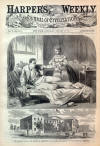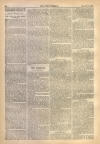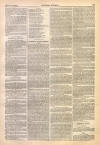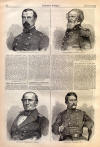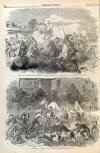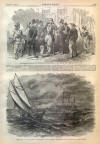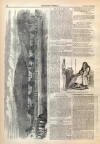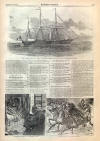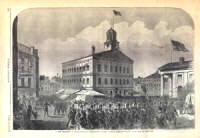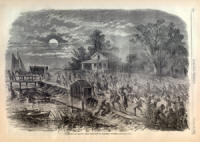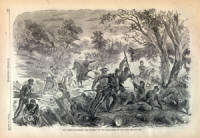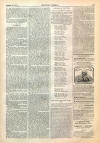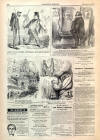Prince Napoleon's Yacht
|
|
This Site:
|
AUGUST 17, 1861.] HARPER'S WEEKLY. 523 THE "JEROME NAPOLEON" PRINCE NAPOLEON'S STEAM-YACHT, NOW IN THE HARBOR OF NEW YORK.(Previous Page) Lieutenant-colonel Chambers saw a wounded soldier bayoneted by a rebel in cold blood. Colonel Slocum, wounded, and bleeding to death, was fired at by cannon so that he had to be moved six times by the surgeons before his wounds could be dressed. The Black Horse Cavalry rode down to the Sudley Church, which was used as a hospital, and fired their revolvers through the windows at the wounded as they lay. In a word, scores upon scores of reliable witnesses testify that at this Bull Run battle the savages who fought under the Confederate Flag systematically butchered the wounded, and this not only in obedience to their own fiendish instincts, but by the order of their officers. ON HER DEATH-BED.A LULLABY.HUSH, baby, hush! the still dews are falling Silence muffles all the earth, and steals over the sea, love; Fair rides the moon—but, all, the fairest moon Will never bring my darling back to me, love! Hush, baby, hush! the gray light is dawning—Slumber dies from earth and sea, and peace hurries away, love; Fair glows the morn—but, ah, the morning light Has other eyes than mine to fill to-day, love! Hush, baby, hush! the dull winds are waking—Mournful over land and sea, and wild thorough the sky, love; Yes, let them mourn—the love that man can give Will never fill my darling's heart like my love! Ah, how they wail ! And yet, they have tidings—Tidings to a mother's soul too sweet not to be true, love; Death may be dark; but soon there is a day When Love Himself shall lead me back to you, love! THE CAVALIER'S ESCAPE.TRAMPLE! trample! went the roan, Trap! trap! went the gray; But pad! pad! PAD ! like a thing that was mad, My chestnut broke away.—It was just five miles from Salisbury town, And but one hour to-day. Thud! THUD! came on the heavy roan, Rap ! RAP ! the mettled gray; But my chestnut mare was of blood so rare, That she showed them all the way. Spur on! spur on!—I doffed my hat, And wished them all good-day. They splashed through miry rut and pool,
Splintered through fence and rail;
I saw them droop and tail. To Salisbury town—but a mile of down, Once over this brook and rail. Trap! trap! I heard their steel hoofs beat Past the walls of mossy stone; The roan flew on at a staggering pace, But blood is better than bone. I patted old Kate, and gave her the spur, For I knew it was all my own. But trample ! trample ! came their steeds, And I saw their wolfs' eyes burn; I felt like a royal hart at bay, And made me ready to turn. I looked where highest grew the May, And deepest arched the fern. I flew at the first knave's sallow throat: One blow, and he was down. The second rogue fired twice, and missed; I sliced the villain's crown. Clove through the rest, and flogged brave Kate, Fast, fast to Salisbury town ! Pad ! pad ! they came on the level sward, Thud! thud ! upon the sand With a gleam of swords, and a burning match, And a shaking of flag and hand: But one long bound, and I passed the gate, Safe from the canting band. PRINCE NAPOLEON'S YACHT.WE publish on this page a picture of PRINCE NAPOLEON'S YACHT, the Jerome Napoleon, now lying in this port, where she arrived on 27th. She is about 1200 tons measurement, and is propelled by a screw, with an engine of 300 horse power. She is handsomely modeled, and is rigged as a bark, in polocca style. In place of the usual white streak there is a wide gilt band around the ship. Her crew consists of 150 persons. The seamen are dressed in the blue of the French navy, and wear neat tarpaulin hats. The servants wear the imperial livery. The interior arrangements and decorations of the ship are rich, without attempt at meretricious display. The officers' rooms are models of comfort and neatness in their arrangement and decorations. The great saloon is finished somewhat in the style of the grand saloon of the Great Eastern. She carries two 12-pound brass carronades for firing signals or salutes. The following account of the distinguished travelers is from the Times: Prince Napoleon is a son of Jerome Napoleon by his second wife, and stands, next after the Prince Imperial, heir to the throne of the Napoleons. He is about forty years of age—stoutish, about five feet eight, and rather like Napoleon the First in face. His Princess Clotilde (Marie Therese Louise Clotilde, to write the name in full) is a daughter of Victor Emanuel, and it will be remembered that the union, a couple of years ago, was looked upon as a "political marriage." The alliance was determined upon by an intimate understanding between the two sovereigns, and the reciprocal interests of France and Piedmont, and the negotiations to bring it about were delayed more than a year. She was born in 1843, and is consequently at present in her nineteenth year, and is petite, of Italian complexion and feature, and very prepossessing and unassuming in manners. With the Princess, as her first maid of honor, is the Duchess d'Abrantes, also quite young and very pretty. Among the suite of the Prince are two Colonels of the Empire, M. Ragon and M. Ferri Pisani, both of them aidsde-camp—the former Governor of the island of Guadaloupe, now a commander in the French navy, M. Bonfils, and M. Maurice Sand, son of Madame George Sand, the illustrious novelist, and himself an author of mark. The commander of the vessel is M. Georgette de Baison, and the officers are Lieutenant Brecque; M. Brunet, Ensign and Artillery Officer of the ship ; Ensign Arago. nephew of the great astronomer; Ensign De la Gueronniere, son of the French senator, newly elevated from the Parisian editorial ranks; M. Orange, Purser; Surgeon Bedanger, and Chief Engineer Monnier. "DEATH MAY BE DARK; BUT SOON THERE IS A DAY—" "ONE LONG BOUND, AND I PASSED THE GATE—" 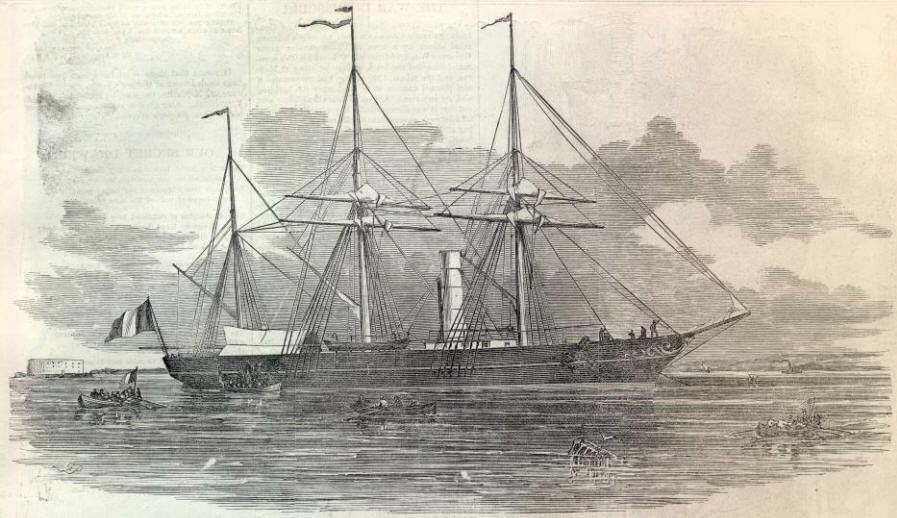 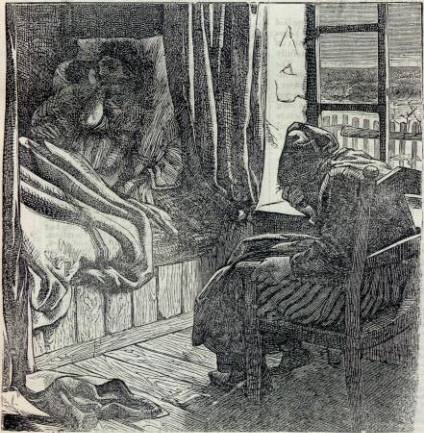 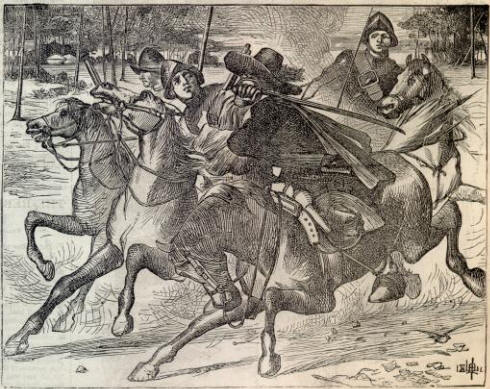 |
||||||||||||||||||||||||
|
|
||
|
|
Site Copyright 2003-2018 Son of the South. For Questions or comments about this collection, contact: paul@sonofthesouth.net |
|
|
Are you Scared and Confused? Read My Snake Story, a story of hope and encouragement, to help you face your fears. |
||
